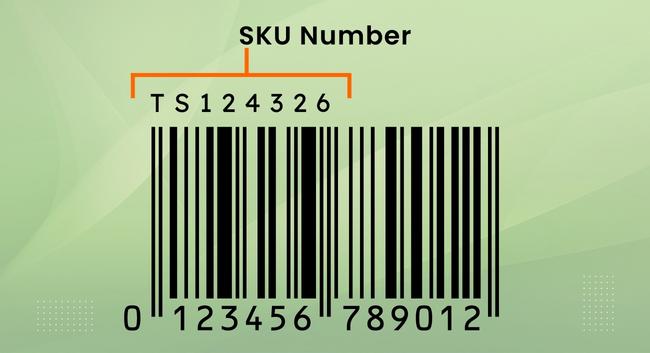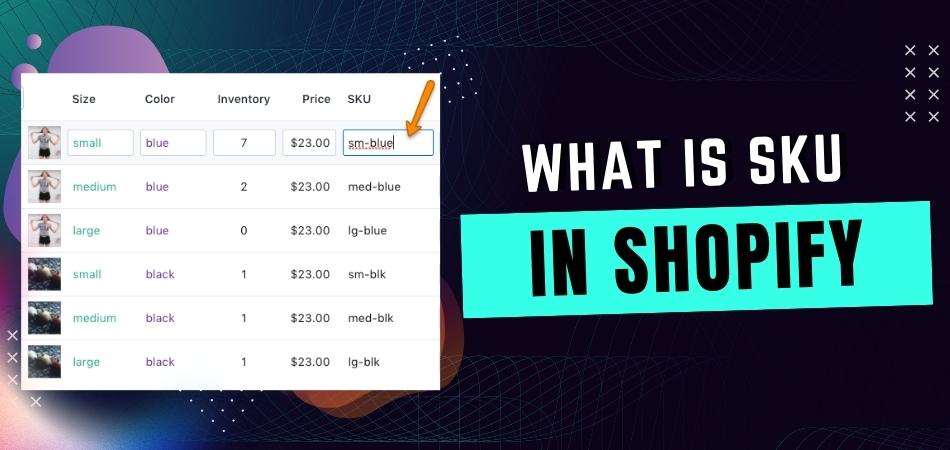In the eCommerce industry, SKU has a special meaning. It is an acronym for Stock Keeping Unit, and it refers to the unique identifier for each product in a store.
So, what is SKU in Shopify?
An SKU, or stock-keeping unit, is a unique identifier for products that you sell in your Shopify store. You can use SKUs to track your inventory and report on sales data.
SKUs can be any combination of letters and numbers, and you can create as many SKUs as you need.
When you create a product in Shopify, you’ll assign an SKU to it. You can also use SKUs to track variants of a product, such as different colors or sizes.
What is SKU Generator?
AN SKU or stock-keeping unit is a unique code that is assigned to each product in your inventory. This code is used to track the product and helps you keep track of your inventory levels.
An SKU generator is a tool that can help you create unique codes for each of your products.
This can be helpful if you have a large inventory and need to keep track of all of your products.
Is SKU Important Shopify?
SKU (Stock Keeping Unit) is a code that uniquely identifies a product and helps keep track of inventory.
It is important to have accurate and up-to-date SKUs in your Shopify store because they are used to track your inventory levels, reorder products, and fulfill orders.
You can find the SKU for each product in your Shopify admin under “Inventory.” If you are just starting out, you may not have SKUs for all of your products yet.
You can generate SKUs for your products using a free online tool like SkuVault.
Once you have generated SKUs for your products, be sure to add them to your Shopify store so that you can start tracking your inventory levels and fulfilling orders more efficiently.
What is the Purpose of an SKU?
An SKU (stock-keeping unit) is a code that uniquely identifies a product in your inventory.
It’s used to track inventory levels and can be helpful when ordering new products from suppliers.
The purpose of an SKU is to help you keep track of your inventory and make reordering easy.
By having a unique code for each product, you can quickly identify what needs to be restocked and avoid ordering duplicates.
SKUs can also be useful for tracking sales data and analyzing which products are selling well.
How to Create SKU in Shopify?
Adding an SKU to your Shopify products is a great way to keep track of your inventory and ensure that you are always in stock.

Here’s how to do it:
Step-1: From your Shopify admin, go to Products > All products.
Step-2: Click on the product to that you want to add an SKU.
Step-3: In the Product details section, enter the SKU in the SKU field.
Step-4: Click Save.
How to Manage SKU on Your Shopify?
One of the most important aspects of managing a shop on Shopify is keeping track of your SKUs, or stock-keeping units.
An SKU is a unique code that is assigned to each product in your inventory, and it is used to track sales, customers, and inventory levels.
While it may seem like a daunting task to keep track of all of your SKUs, there are a few simple steps that you can follow to make the process easier.
First, create a master list of all of the products in your inventory, including both physical and digital items.
For each product, record the SKU, product name, price, and any other relevant information.
This master list will be your reference point when adding or removing products from your shop.
Next, create a system for organizing your SKUs.
One option is to create a separate spreadsheet for each category of product.
For example, you might have one spreadsheet for physical items and another for digital items.
Alternatively, you can create a single spreadsheet with all of your SKUs listed in alphabetical order.
Whichever system you choose, be sure to update it regularly as you add or remove products from your shop.
Finally, take some time to familiarize yourself with the Shopify backend so that you can easily find and update your SKUs as needed.
By following these simple steps, you can streamline the process of managing your shop’s inventory and ensure that you always know exactly what products are in stock.
Shopify Product SKU Liquid
If you’re running a Shopify store, then you know that each product has a unique SKU (stock-keeping unit).
This identifier is important for keeping track of your inventory and making sure that your products are being shipped correctly.
One way to make sure that your products are being shipped correctly is to use Shopify’s product SKU liquid.
This feature allows you to automatically generate SKUs for your products based on certain criteria.
For example, you could specify that all products in a certain category should have the same SKU prefix.
This can be helpful if you have a lot of products and want to make sure that they’re all properly labeled.
It can also help you keep track of your inventory levels since you’ll know exactly how many of each product you have in stock.
To set up Product SKU Liquid, go to the “Settings” tab in your Shopify admin and click on “Products.”
Then, click on the “SKU Generator” button and select the options that you want.
Once you’ve saved your changes, all of your products will have unique SKUs generated automatically!
What Does Mean SKU in Business?
In business, SKU stands for stock-keeping unit and is a unique identifier for each distinct product or item in your inventory.

An SKU might be a barcode, or it might be a simple code that you create yourself.
Typically, businesses will assign an SKU to each product they sell so they can track inventory levels and reorder products as needed.
Using SKUs can help streamline your inventory management process and make it easier to keep track of what you have in stock.
They can also be helpful when selling online, as potential customers can search for items by their SKU.
Key Elements of SKU
When it comes to product identification, an SKU is one of the most important elements.
An SKU, or stock-keeping unit, is a code that uniquely identifies a product within your inventory.
This code can be used for internal tracking and can also be displayed to customers on your website or in brick-and-mortar stores.
There are many different ways to create an SKU for your products, but there are a few key elements that should always be included:
The first element is the manufacturer’s identifier. This could be an abbreviation of the company name or initials.
For example, HP’s SKUs typically start with “H.”
The next element is usually a unique code assigned by the manufacturer to identify the specific product.
This might include letters and numbers which correspond to features like size, color, or style.
Following the manufacturer’s identifier and unique code, you’ll often see additional letters or numbers which indicate things like where the product was made (USA, China).
What type of packaging it has (blister pack, box), or other special characteristics (refurbished).
Putting all of these elements together creates a complete SKU that looks something like this:
HP12345-US-BX. It’s important to have detailed and accurate information in each component of your SKU so you can accurately track inventory levels and locate specific products when needed.
When creating new products, take some time to consider what information needs to be included in the SKU and develop a system that will work best for your business needs.
Bottom Lines
In Shopify, SKU is an abbreviation for “stock-keeping unit.” An SKU number is a unique identifier assigned to every product in your shop.
It helps you keep track of inventory and allows customers to easily find the products they are looking for.
You can use SKUs to help you manage your inventory more efficiently and increase sales by making it easier for customers to find what they need.




